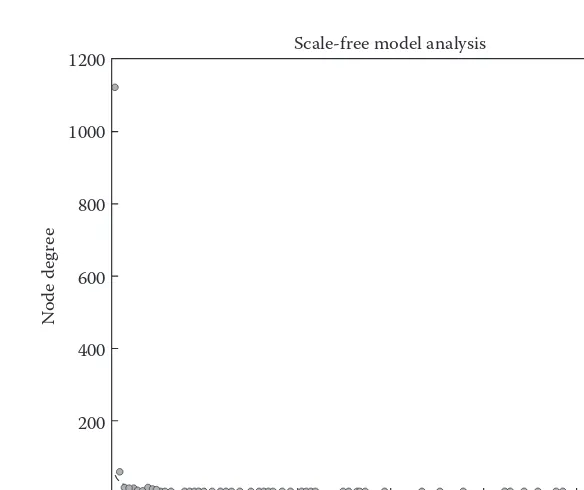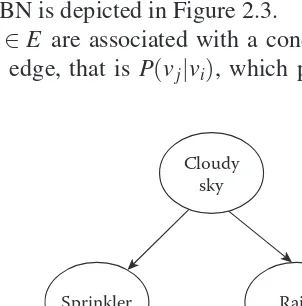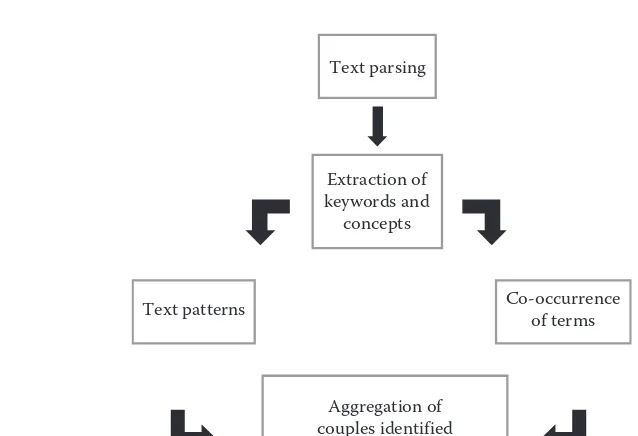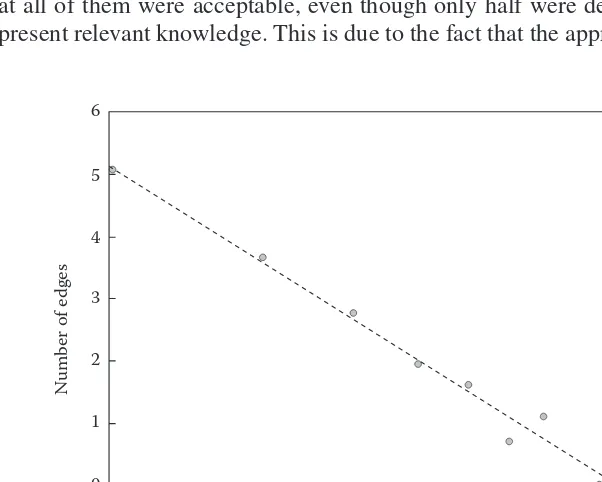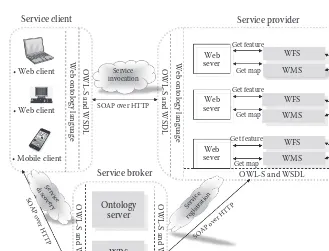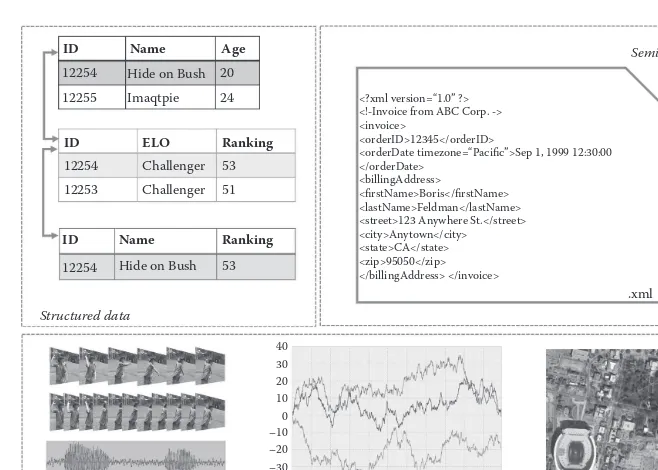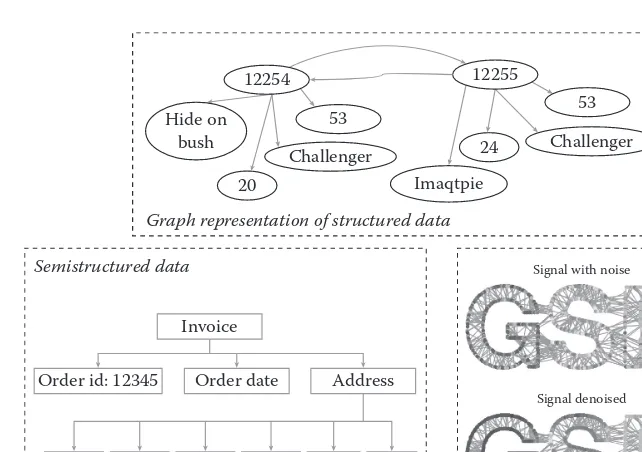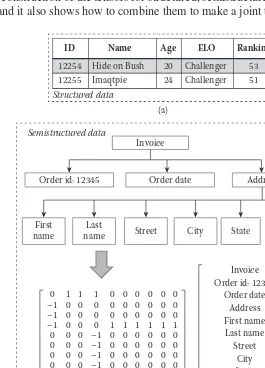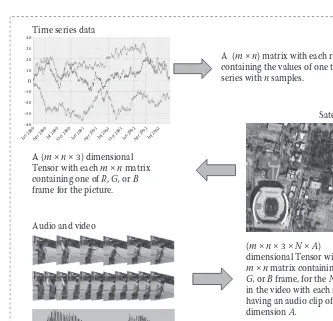Big Data and
Big Data and
Computational Intelligence
in Networking
Edited by
Y U L E I W U
6000 Broken Sound Parkway NW, Suite 300 Boca Raton, FL 33487-2742
© 2018 by Taylor & Francis Group, LLC
CRC Press is an imprint of Taylor & Francis Group, an Informa business
No claim to original U.S. Government works
Printed on acid-free paper
International Standard Book Number-13: 978-1-4987-8486-3 (Hardback)
This book contains information obtained from authentic and highly regarded sources. Reasonable efforts have been made to publish reliable data and information, but the author and publisher cannot assume responsibility for the validity of all materials or the consequences of their use. The authors and publishers have attempted to trace the copyright holders of all material reproduced in this publication and apologize to copyright holders if permission to publish in this form has not been obtained. If any copyright material has not been acknowledged please write and let us know so we may rectify in any future reprint.
Except as permitted under U.S. Copyright Law, no part of this book may be reprinted, reproduced, transmitted, or utilized in any form by any electronic, mechanical, or other means, now known or hereafter invented, including photocopying, microfilming, and recording, or in any information storage or retrieval system, without written permission from the publishers.
For permission to photocopy or use material electronically from this work, please access www. copyright.com (http://www.copyright.com/) or contact the Copyright Clearance Center, Inc. (CCC), 222 Rosewood Drive, Danvers, MA 01923, 978-750-8400. CCC is a not-for-profit organization that provides licenses and registration for a variety of users. For organizations that have been granted a photocopy license by the CCC, a separate system of payment has been arranged.
Trademark Notice: Product or corporate names may be trademarks or registered trademarks, and are used only for identification and explanation without intent to infringe.
Library of Congress Cataloging-in-Publication Data Names: Wu, Yulei, editor.
Title: Big data and computational intelligence in networking / Yulei Wu, Fei Hu, Geyong Min, Albert Y. Zomaya.
Description: Boca Raton, FL : CRC Press, [2018] | Includes bibliographical references and index.
Identifiers: LCCN 2017028407| ISBN 9781498784863 (hardback : acid-free paper) | ISBN 9781315155678 (e-book) | ISBN 9781498784870 (e-book) | ISBN 9781351651721 (e-book) | ISBN 9781351642200 (e-book)
Subjects: LCSH: Big data. | Cloud computing. | Computer networks--Management. | Computational intelligence.
Classification: LCC QA76.9.B45 W824 2018 | DDC 005.7--dc23 LC record available at https://lccn.loc.gov/2017028407
Contents
Preface . . . . ix
Contributors . . . . xiii
PART I:
BASICS OF NETWORKED BIG DATA
1
1. A Survey of Big Data and Computational Intelligence
in Networking . . . . 3 Yujia Zhu, Yulei Wu, Geyong Min, Albert Zomaya, and Fei Hu
2. Some Mathematical Properties of Networks for Big Data . . . . . 27 Marcello Trovati
3. Big Geospatial Data and the Geospatial Semantic Web:
Current State and Future Opportunities . . . . 43 Chuanrong Zhang, Tian Zhao, and Weidong Li
4. Big Data over Wireless Networks (WiBi) . . . . 65 Immanuel Manohar and Fei Hu
PART II:
NETWORK ARCHITECTURE FOR
BIG DATA TRANSMISSIONS
85
5. Efficient Big Data Transfer Using Bandwidth Reservation Service in High-Performance Networks . . . . 87 Liudong Zuo and Michelle Mengxia Zhu
6. A Dynamic Cloud Computing Architecture for Cloud-Assisted
Internet of Things in the Era of Big Data . . . 107 Mehdi Bahrami and Mukesh Singhal
7. Bicriteria Task Scheduling and Resource Allocation for
Streaming Big Data Processing in Geo-Distributed Clouds . . . . 125 Deze Zeng, Chengyu Hu, Guo Ren, and Lin Gu
PART III: ANALYSIS AND PROCESSING OF
NETWORKED BIG DATA
149
8. The ADMM and Its Application to Network Big Data . . . 151 Nan Lin and Liqun Yu
9. Hyperbolic Big Data Analytics for Dynamic Network
Management and Optimization . . . 177 Vasileios Karyotis and Eleni Stai
10. Predictive Analytics for Network Big Data Using
Knowledge-Based Reasoning for Smart Retrieval of Data,
Information, Knowledge, and Wisdom (DIKW) . . . 209 Aziyati Yusoff, Norashidah Md. Din, Salman Yussof, Assad Abbas, and Samee U. Khan
11. Recommendation Systems . . . 227 Joonseok Lee
12. Coordinate Gradient Descent Methods . . . 265 Ion Necoara
13. Data Locality and Dependency for MapReduce . . . 293 Xiaoqiang Ma, Xiaoyi Fan, and Jiangchuan Liu
14. Distributed Machine Learning for Network Big Data . . . 331 Seunghak Lee
Contents vii
PART IV: EMERGING APPLICATIONS OF
NETWORKED BIG DATA
371
16. Mobile Augmented Reality to Enable Intelligent Mall Shopping by Network Data . . . 373 Vincent W. Zheng and Hong Cao
17. Toward Practical Anomaly Detection in Network Big Data . . . . 411 Chengqiang Huang, Yulei Wu, Zuo Yuan, and Geyong Min
18. Emerging Applications of Spatial Network Big Data
in Transportation . . . 433 Reem Y. Ali, Venkata M.V. Gunturi, Zhe Jiang, and Shashi Shekhar
19. On Emerging Use Cases and Techniques in Large Networked
Data in Biomedical and Social Media Domain . . . 453 Vishrawas Gopalakrishnan and Aidong Zhang
20. Big Data Analysis for Smart Manufacturing . . . 499 Z. Y. Liu and Y. B. Guo
Preface
Recent years have witnessed a deluge of network data propelled by the emerging online social media, user-generated video contents, and global-scale communi-cations, bringing people into the era of big data. Such network big data holds much critical and valuable information including customer experiences, user behaviors, service levels, and other contents, which could significantly improve the efficiency, effectiveness, and intelligence on the optimization of the current Internet, facilitate the smart network operation and management, and help service providers and content providers reduce capital expenditure (CapEx) and opera-tional expenditure (OpEx) while maintaining a relatively high-level quality of service (QoS) and quality of experience (QoE).
Typical examples of network intelligence received from network big data include rapid QoE impairment detection and mitigation, optimization of network asset utilization, proactive maintenance, rapid outage restoration, and graceful disaster recovery. These aims can be achieved from high-level computational intelligence based on emerging analytical techniques such as big data pro-cessing, Web analytics, and network analytics employing software tools from advanced analytics disciplines such as machine learning, data mining, and pre-dictive analytics. The computational intelligence for big data analysis is playing an ever-increasingly important role in supporting the evolution of the current Internet toward the next-generation intelligent Internet.
However, the unstructured, heterogeneous, sheer volume and complex nature of network big data pose great challenges on the computational intelligence of these emerging analytical techniques due to high computational overhead and communication cost, non-real-time response, sparse matrix-vector multi-plications, and high convergence time. It is therefore of critical importance to understand network big data and design novel solutions of computational intelligence, scaling up for big data analytics of large-scale networks to auto-matically discover the hidden and valuable information available for smart network operations, management, and optimization. This has been established as
a new cross-discipline research topic in computer science, requiring anticipation of technical and practical challenges faced by mixed methods across multiple disciplines.
In this book, we have invited world experts in this area to contribute the chapters that cover the following four parts:
1. Part 1: Basics of Networked Big Data: This part helps understand the prop-erties, characteristics, challenges, and opportunities of networked big data, geospatial data, and wireless big data. This part covers the following:
a. Mathematical properties: A variety of aspects related to networks, including their topological and dynamical properties, as well as their applications to real-world examples
b. Geospatial data and geospatial semantic web: Challenges and opportunities of the geospatial semantic web brought for sharing and utilizing big geospatial data
c. Big data over wireless networks: Typical scenarios, various chal-lenges, and potential solutions for wireless transmission of big data
2. Part 2: Network Architecture for Big Data Transmissions: This part presents new proposals and network architectures to ensure efficient big data transmissions and streaming big data processing.
a. Big data transfer: Challenges of bandwidth reservation service for efficient big data transfer and the potential solutions
b. Internet of Things (IoT): A dynamic and independent Cloud com-puting architecture based on a service-oriented architecture for IoT devices, to allow users to freely transfer their IoT devices from one vendor to another
c. Streaming big data processing: How to maximize QoS and minimize OpEx when performing task scheduling and resource allocation in geo-distributed Clouds
3. Part 3: Analysis and Processing of Networked Big Data: This part explains how to perform big data analytics based on emerging analytical techniques such as big data analytics, Web analytics, network analytics, and advanced analytics disciplines such as machine learning, data mining, and predictive analytics. This part covers the following areas:
a. Alternating direction method of multiplier (ADMM): Its applications to large-scale network optimizations
Preface xi
network evolution on the computation of key network metrics; hyperbolic big data analytics
c. Predictive analytics and smart retrieval: Utilize the network big data by performing a data, information, knowledge, and wisdom (DIKW) hierarchy to the product of its processes
d. Recommendation systems: Key challenges and solutions for data sparsity problem, data scale issue, and cold-start problem
e. Coordinate gradient descent methods: Unconstrained convex mini-mization problems with differentiable objective function in network problems
f. MapReduce: Data locality and dependency analysis; dependency-aware locality for MapReduce
g. Distributed machine learning: Big data and big models for network big data; how to parallelize parameter updates on multiple work-ers; how to synchronize concurrent parameter updates performed by multiple workers
h. Big graph: Big graph decomposition; real-time and large-scale graph processing; big data security
4. Part 4: Emerging Applications of Networked Big Data: This part covers some emerging applications on the following:
a. Intelligent mall shopping: Location-based mobile augmented real-ity applications; using network data to enable intelligent shopping; robust feature learning in cold-start heterogeneous-device localiza-tion; learning to query in the cold-start retailer content
b. Network anomaly detection: How to efficiently use network big data to perform accurate anomaly detection
c. Transportation: Advances of spatial network big data (SNBD) tech-niques; challenges posed by SNBD in transportation applications and the potential solutions
d. Biomedical and social media domain: Graph as a representation schema for big data; graph-based models and analyses in social text mining, and bioinformatics and biomedical
e. Smart manufacturing: Big data characteristics in manufacturing; data collection and data mining in manufacturing; applications of big data in manufacturing.
of network big data, efficient collection and management of network big data, distributed and scalable online analytics for network big data, and emerging applications of network big data for computational intelligence.
Targeted audiences: This book targets both academia and industry readers. Grad-uate students can select promising research topics from this book that are suitable for their thesis or dissertation research. Researchers will have a deep under-standing of the challenging issues and opportunities of network big data and can thus easily find an unsolved research problem to pursue. Industry engineers from IT companies, service providers, content providers, network operators, and equipment manufacturers can get to know the engineering design issues and cor-responding solutions after reading some practical schemes described in some chapters.
We have required all chapter authors to provide as much technical detail as possible. Each chapter also includes references for readers’ further studies and investigations. If you have any comments or questions on certain chapters, please contact the chapter authors for more information.
Contributors
Assad Abbas
North Dakota State University Fargo, North Dakota
Reem Y. Ali
Department of Computer Science University of Minnesota
Minneapolis, Minnesota
Mehdi Bahrami
Cloud Lab
University of California, Merced Merced, California
Hong Cao
Analytics & Enterprise Intelligence Ernst & Young Advisory Pte. Ltd Singapore
Xiaoyi Fan
School of Computing Science Simon Fraser University
Burnaby, British Columbia, Canada
Vishrawas Gopalakrishnan
Department of Computer Science and Engineering
State University of New York Buffalo, New York
Lin Gu
Huazhong University of Science and Technology
Wuhan, China
Venkata M.V. Gunturi
Department of Computer Science Indraprastha Institute of Information
Technology Delhi, India
Y. B. Guo
Department of Mechanical Engineering
University of Alabama Tuscaloosa, Alabama
Chengyu Hu
China University of Geosciences Wuhan, China
Fei Hu
Electrical and Computer Engineering University of Alabama
Tuscaloosa, Alabama
Chengqiang Huang
University of Exeter Exeter, United Kingdom
Zhe Jiang
Department of Computer Science University of Alabama
Tuscaloosa, Alabama
Vasileios Karyotis
School of Electrical and Computer Engineering
Department of Geography & Center for Environmental Sciences and Washington University in St. Louis St. Louis, Missouri
School of Electronic Information and Communications
Contributors xv Washington University in St. Louis St. Louis, Missouri
Department of Computer Science and Engineering
State University of New York Buffalo, New York
Chuanrong Zhang
BASICS OF
NETWORKED
BIG DATA
Chapter 1
A Survey of Big Data and
Computational
Intelligence in
Networking
Yujia Zhu, Yulei Wu, and Geyong Min
University of Exeter Exeter, United Kingdom
Albert Zomaya
The University of Sydney Sydney, Australia
Fei Hu
University of Alabama Tuscaloosa, Alabama
CONTENTS
1.1 Introduction . . . 4 1.2 Comprehensive Understanding of Networked Big Data . . . 5 1.2.1 Challenges for networked big data . . . 6
1.2.1.1 Distributed and decentralized data collection
and storage . . . 6 1.2.1.2 Distributed and parallel data processing . . . 7
1.2.1.3 More complex and evolving relationships
among data . . . 7
1.2.1.4 Heterogeneous data representation . . . 8
1.2.2 Requirement engineering of networked big data for computational intelligence . . . 8
1.2.3 Representation and modeling of networked big data . . . 9
1.2.3.1 Graph representation . . . 9
1.2.3.2 Dynamic representation . . . 10
1.2.3.3 Tensor. . . 10
1.2.4 Security and privacy issues on networked big data . . . 11
1.2.5 Wireless big data . . . 12
1.3 Network Architecture for Big Data Transmissions. . . 13
1.3.1 Novel collection protocols for networked big data . . . 13
1.3.2 Efficient management of networked big data and distributed data systems. . . 14
1.3.3 Context-aware networked big data processing for computational intelligence . . . 15
1.4 Analysis and Processing of Networked Big Data . . . 16
1.4.1 Distributed machine learning algorithms for networked big data . . . 16
1.4.2 Distributed data mining with networked big data. . . 17
1.4.3 Online prediction with networked big data . . . 18
1.4.4 Sparse matrix vector multiplication on distributed architectures for networked big data. . . 19
1.4.5 High-performance analytics platform for networked big data . . . 20
1.5 Conclusions . . . 21
References . . . 21
1.1
Introduction
A Survey of Big Data and Computational Intelligence in Networking 5
better understand the customers by taking advantage of the digital data men-tioned above. Customers can respond to each song with “like” or “dislike” by highlighting, or not, a heart tag beneath the song. This process is similar to a training process in machine learning. According to these valuable data, indicat-ing users’ preference NeteaseMusic can recommend songs to users with very high accuracy.
The success of NeteaseMusic can showcase the benefits that big data brings— smarter decisions and better predictions. By utilizing it appropriately, we can explore some fresh areas so far dominated by intuition and gut. Big data spreads to every aspect in people’s daily lives, changing long-standing ideas about the value of experience, the nature of expertise, and the practice of management [1]. Networking has become an indispensable part of the modern world, pro-viding convenient access to the Internet, remote communication, information exchange, etc. As mentioned above, big data also has a great influence on net-working. The amount of data has exploded in recent years, with a transformation from traditional simple-structured physical networks to complex-structured vir-tual networks. Considering network management, a novel method is to collect unstructured system logs (which can reach the magnitude of terabytes (TB) per day) and analyze these valuable data to evaluate system performance or tackle faults. So far, we have explored what opportunities networked big data brings, but the challenges are also significant. In the next chapter, a variety of challenges will be discussed.
1.2
Comprehensive Understanding of Networked
Big Data
Networked big data, in fact, is not simply another way of saying “analytics” or large amount of data. In addition to the common features of veracity and value, networked big data has higher volume, velocity, and variety compared with other forms of big data.
1. Volume: According to a recent report from IBM, 2.5 quintillion bytes of data are created every day [2]. The Web includes various sources of data like cookies, browsing history, and so on, which makes it an extraordinary data set. Many search engines like Google and Yahoo are responsible for dealing with billions of user access requests every day. When entering the keyword “big data” in Google Chrome, about 341,000,000 results are returned in 0.59 seconds (as of May 2017).
hardware components like routers or links down to virtual machines, there are a number of fault management tools such as HP Openview and Open-NMS, which focus on real-time fault localization or prediction. Thus, how to quickly and accurately handle faults in order to reduce human intervention is critical to making a company more competitive.
3. Variety: Networked big data comes from various sources: for instance, messages, images or videos from social networks, event logs and con-figuration parameters from systems, measurements from sensors, and many more. Specifically speaking, every second, on average, around 6000 tweets are posted on Twitter, which corresponds to over 350,000 tweets sent per minute, 500 million tweets per day, and around 200 billion tweets per year [3]. On 4 October 2012, the first presidential debate between President Barack Obama and Governor Mitt Romney triggered more than 10 million tweets within 2 hours [4]. A vast number of users post tweets in various formats such as texts, images, or videos contributing to data diversity.
1.2.1
Challenges for networked big data
A network application in the era of big data usually involves data sources from different geographically distributed data centers. Thus, in addition to the general nature of big data such as large volume, high velocity, and high variety, net-worked big data possesses many unique features, which are summarized below. These unique features also bring some research issues of networked big data, as shown in Figure 1.1.
1.2.1.1
Distributed and decentralized data collection and storage
An emerging wave of Internet deployments, most notably the Internet of Things (IoT) [5] and the integration of IoT and fog computing [6], often depend on a distributed networking system to collect data from geographically distributed
Big data sources (sender)
Big data destination
(receiver) How to maximize big data transmission throughput?
Security and privacy issues How to minimize end-to-end delay?
A Survey of Big Data and Computational Intelligence in Networking 7
sources, such as sensors and data centers. For example, visualizing data collected within the IoT are geo-related and sparsely distributed. Internet geographic infor-mation system (GIS)-based solutions are required to cope with this challenge. Apache Hadoop [7] is well known for its distributed storage and processing of big data. Hadoop Distributed File System (HDFS) [8] is the core part of the storage system in Hadoop, which is a distributed file system that stores data on commodity machines, providing very high aggregate bandwidth across the clus-ters. HDFS was inspired by Google file system (GFS) [9], which is the most widely adopted mechanism for distributed file systems.
1.2.1.2
Distributed and parallel data processing
In light of the way the networked big data are collected, it is straightforward to process these data in a distributed and parallel manner. There have been several well-known frameworks available for distributed big data processing, e.g., Apache Hadoop [7], Apache Storm [10], Apache Spark [11], and Apache Flink [12]. Hadoop is the first major big data processing framework that provides batch processing based on its MapReduce processing engine. Since it heavily leverages permanent storage, each task involves multiple instances of reading and writing operations. When using Hadoop, time should not be a significant factor. In contrast to batch processing, stream processing systems compute over data as it enters the system, and thus could well serve the processing with near real-time demands. Storm is the first major stream processing framework for big data analytics that focuses on extremely low latency, but does not provide a batch processing mode. Apache Spark provides a hybrid processing system, where it is a batch processing framework with stream processing capabilities. Spark focuses on speeding up batch processing workloads by offering full in-memory compu-tation and processing optimization. It provides a good candidate for those with diverse processing workloads. Apache Flink offers a stream processing frame-work with the support for traditional batch processing models. It treats batch processing as an extension of stream processing by reading a bounded data set off persistent storage.
1.2.1.3
More complex and evolving relationships among data
and followers. Mining the correlations between users’ behavior and preference can reveal some underlying but valuable information for these social network operators. In this dynamic world, there is no doubt that these relationships evolve all the time, temporally and spatially. Another example is troubleshoot-ing in networks, where topology graphs can be regarded as spatial information while key performance indicators (KPI) or traffic records represented in time series can be regarded as temporal information. Kimura et al. [13] once claimed that log messages should be characterized as spatial-temporal data, since event logs are usually generated from distributed hosts, routers, or switches spanning across several geographical locations (spatial information) and include times-tamps indicating generating time (temporal information). Based on deep insights of spatial-temporal features of logs, they proposed two novel techniques, sta-tistical template extraction (STE) and log tensor factorization (LTF), to capture particular patterns of log messages which provide useful knowledge into root cause analysis.
1.2.1.4
Heterogeneous data representation
Traditional data mining algorithms usually require inputs to be homogeneous, that is to say, inputs should possess similar formats. However, as mentioned above, big data comes from heterogeneous sources, making traditional min-ing algorithms inapplicable to handle this problem in the forthcommin-ing big data revolution. Most objects and data in the real world are of multiple types and interconnected, forming complex, heterogeneous but often semistructured information networks [14]. There are three main challenges that make mining heterogeneous networks a new game:
1. Information propagates across heterogeneous nodes and links.
2. Rich semantic information should be carefully and effectively parsed to extract the representative network structures.
3. User demands should be taken into consideration to automatically select the right relationships.
Sun and Han [14] proposed a novel semistructured heterogeneous network modeling focusing on the objects and the interactions among them. In this way, rich semantic information and valuable schema-level information can be retained. A directed graph with an object-type mapping function and a link-type mapping function is utilized to represent the heterogeneous information networks effectively.
1.2.2
Requirement engineering of networked big data for
computational intelligence
A Survey of Big Data and Computational Intelligence in Networking 9
programming explicit algorithms with good performance is difficult or unfea-sible. There is a large amount of research taking place to combine advanced machine learning techniques with networked big data analysis. Shang et al. [15] suggested a novel fault diagnosis model of computer networks based on rough set and back-propagation (BP) neural networks. They retrieved faults as a series of rules and reduced them to a minimum diagnosis rules by rough set theory; then a neural network was designed to learn from these rules in order to identify and localize faults quickly and accurately. Sankaran et al. [16] designed a hard-ware framework embedded with a machine learning coprocessor to emphasize intrusion detection in case of attacks unknown for the signature library. They chose a vector space model with a K-nearest neighbors (K-NN) classifier and a radial basis function (RBF)-based classifier, concluding that machine learning processors enable improvement in energy saving, processing speed, and detec-tion accuracy, especially dealing with big data sets. Chung et al. [17] addressed the significant advantages that deep neural networks (DNNs) demonstrate in pat-tern recognition applications, regardless of the biggest drawback of computation resource consumption and training time reaching a tenfold addition compared to traditional techniques. In order to cope with this, a data-parallel Hessian-free second-order optimization algorithm is used to train DNN and implemented by a large-scale speech task on Blue Gene/Q computer system due to the excellent interprocessor communication ability of this system. The results show that per-formance on Blue Gene/Q scales up to 4096 processes lossless in accuracy and that enables the training of DNN using billions of inputs in just a few hours.
1.2.3
Representation and modeling of networked big data
Networked big data possesses unstructured, semistructured, and structured formats. This nature hinders its representation and modeling, which are of paramount importance in the process of big data analytics. Several existing representation and modeling methods have been reported in the current litera-ture, e.g., graph representation, dynamic representation, and matrix representa-tion [18].
1.2.3.1
Graph representation
of techniques to simplify and refine graphs summed up in three categories: graph spectra [19], graph summarization, and graph compression.
Graphs can be represented by an adjacency matrix and mapped into its spectrum domain, filtering out small elements by exploiting application-aware thresholds. Finally, a smaller graph can be obtained by means of an inverse trans-form. Sahneh et al. [20] utilized Laplacian spectra to represent transition rate graphs in spreading process modeling of complex networks.
The original concept of graph summarization comes from the database com-munity [21] and aims to provide users with small and informative graphs based on attributes and relationships of interest.
Shi et al. [22] addressed an Influence Graph Summarization (IGS) problem abstracting individual influence from complex citation networks. They proposed a summarization scheme based on matrix factorization techniques to handle this problem and tested it on real-world citation networks to prove that this method outperforms the previous method in visual effects and quantitative IGS objective optimization.
Redundancies are hidden in nodes belonging to similar communities; graph compression in fact focuses on identifying communities. Lim et al. [23] discov-ered the importance of hubs or high-degree nodes disconnecting graphs, gradu-ally removed them from graphs and fingradu-ally acquired a smaller giant connected component. This compression method proves more suitable for real-world issues than a conventional “caveman community.”
1.2.3.2
Dynamic representation
Graph representation can be regarded as a static representation of valid net-work topology and properties, while in practice a large number of netnet-works are dynamically characterized. How to efficiently represent dynamic features of net-works such as topology and configuration has received notable attention from researchers and practitioners. A majority of current approaches take advantage of visualization techniques. Burch et al. [24] chose a series of timesteps and rep-resented each stage as a single graph contributing to a dynamic and hierarchically organized graph set for visualization. Mashima et al. [25] visualized user traffic on radio station and TV-viewing patterns from an Internet Protocol Television (IPTV) service under the assistance of a geographic map metaphor in coping with large-scale dynamic data sets.
1.2.3.3
Tensor
A Survey of Big Data and Computational Intelligence in Networking 11
of tensor extension operators, the authors represented the various types of data as subtensors and merged them to a unified tensor. They further devised an incre-mental high-order singular value decomposition method (IHOSVD) to extract the core tensor, which is able to update the orthogonal bases and compute the new core tensor by recursively applying the incremental matrix decomposition algorithm. In comparison with the traditional approaches of data dimensionality reduction—e.g., principal component analysis (PCA) [27], incremental singu-lar value decomposition (SVD) [28], and dynamic tensor analysis (DTA) [29], which are mainly used for low dimension reduction—IHOSVD is particularly suitable for handling high-dimensional data and extracting the core data sets from streaming networked big data with a relatively low time consumption.
1.2.4
Security and privacy issues on networked big data
Every day, people surf the Internet, browse websites, post messages, and share personal information like cookies through their own digital devices. This can pose a potential threat to privacy issues through identity theft, online banking abuse, password leakage, and so on. Information security suffers from the prolif-eration of devices connected to the Internet and connected with each other. Big data security issues are related to a set of risk areas, which includes information lifecycle, data creation, and collection processes. Despite complex initial char-acteristics, ultimately, the objective remains the same as traditional data types, devoted to preserving confidentiality, integrity, and availability. Due to user/data mobility requirements, conventional security measures such as firewalls are no longer suitable for big data scenarios. Cloud Security Alliance (CSA) [30], a non-profit organization with a mission to promote the use of best practices for providing security assurance within Cloud Computing and provide education on the uses of Cloud Computing to help secure all other forms of computing, has created a Big Data Working Group, which has focused on the major challenges to implement secure Big Data services. According to CSA, security and privacy challenges can be categorized according to four aspects: infrastructure security (e.g., secure distributed computation using MapReduce), data privacy (e.g., data mining that preserves privacy/granular access), data management (e.g., secure data provenance and storage), and integrity and reactive security (e.g., real-time monitoring of anomalies and attacks).
leveraging rate), a Cloud computing optimization combination evaluation layer (which will optimize and integrate results under thoughtful resource utilizing plans to achieve the best Quality of Service (QoS) target), and a big data Cloud computing algorithm selection layer (where optimal execution strategy will be selected according to different requirements). Considering these features of Cloud computing systems, a four-level security framework was proposed by Cui [31], involving copyright authentication, virtual task decomposition, collab-orative network password protection, disaster recovery scheme development, and so on.
1.2.5
Wireless big data
First, as demonstrated in Ref. [32], wireless big data can be simply explained as a wide range of massive data generated, collected, and stored in wireless networks by wireless devices and users. Wireless big data has a significant influence over network deployment and service quality, and poses a big challenge to traditional solutions due to its dynamic data sets and stochastic nature. Lijun et al. [32] categorized wireless big data through two aspects: socioecological and specific application. From the socioecological perspective, big data can be explained as three types: primordial wireless big data (data sets generated by massive wireless network users such as wireless access behavior), derived wireless big data (spec-trum, transmission, access, and network data served for reliable communication such as resource allocation of transmission signals), and developing wireless big data (data collected from performance testing and evaluation processes). From the specific application perspective, categories can be simply described as cel-lular networks, Wi-Fi hotspots, smart grids, wireless sensor networks (WSNs), IoT, and so on.
Researches have explored massive efficient data representation as a solution in wireless networking domain. He et al. [33] proposed a unified data analytic model based on the random matrix theory for tackling problems of dynamic data collected from multiple sources. A variety of data types such as signaling data, traffic data, and heterogeneous data are studied to evaluate model perfor-mance in mobile cellular networks. As demonstrated in Ref. [34], large-scale random matrices are applied to model distributed spectrum sensing and network monitoring in a multiple-input multiple-output (MIMO) system. According to specific features such as the large scale and the heterogeneous nature which indi-cate complex interrelationships among data, unstructured data should be taken into consideration as demonstrated in Ref. [34]. A number of subtensors are leveraged to transform various data types into unified tensor representation, then dimension reduction is implemented by SVD method, and, finally, a real case study is simulated on intelligent transportation to evaluate the performance of the proposed model.
A Survey of Big Data and Computational Intelligence in Networking 13
and effective methods are studied in recent research, including time series anal-ysis, machine learning techniques, and game theory. The authors in Ref. [35] proved the potential value of time series analysis in traffic pattern recognition tasks. Regular behavior patterns are extracted to predict future patterns. Deep learning, developed from conventional neural networks, has become a power-ful tool in modeling high-level data representation. In Ref. [36], Apache Spark, a distributed framework supporting deep learning, is utilized to apply deep learning to wireless communication with millions of records. Game theory con-tributes to intelligent rational decision-making in many fields such as economics, psychology, computer science, and so on. The authors in Ref. [37] introduced a network management approach based on a multiple cognitive agent-based divide-and-conquer strategy and the Markovian game-theoretic model.
Apart from data itself, one factor that cannot be neglected is the wire-less channel, which conveys information from end to end. Two commonly accepted methods are deterministic model and stochastic simulation. The for-mer requires enormous spectrum resources consumption, while the latter lacks precision assurance. It is important to seek a balancing point between them to build an accurate channel impulse response (CIR) environment. Network design and optimization is another key factor to achieve energy saving, scalability, and flexibility. Moreover, a wide range of applications such as user mobility analysis and smart grid, making use of wireless big data, can be found in the survey [32].
1.3
Network Architecture for Big Data Transmissions
Without the foundation of a strong, robust, and flexible network, no reliable data can be obtained, resulting in big losses in academic and industrial fields. For example, business enterprises may lose clients due to data loss considering individual demands, and researchers cannot have access to big data centers dis-tributed across worldwide. A vast amount of network architecture is designed to ensure scalability and flexibility during the data transmission phase. In this chapter, various aspects related to this topic will be discussed.
1.3.1
Novel collection protocols for networked big data
data collection), sink nodes (which are responsible for data transfer), and big data center (which is responsible for data integration and management). The main challenges for this ad hoc network are dynamic topological nodes mod-eling due to high-speed moving vehicles and users’ privacy preservation policy assurance. First, vehicles should be registered in a data center before connect-ing to the network, after which a sconnect-ingle sign-on algorithm is utilized to associate authenticated vehicles with the big data center. Finally, a secure information col-lection scheme is applied with lots of operational functions, such as integrity, to protect messages against modification or destruction.
Given a more general application scenario in WSNs, a traditional data col-lection process selects relay nodes (closer to the sink) to transfer the data, which are from the nodes beyond the communication range of sink node, to the sink node, resulting in faster energy consumption of the relay nodes that are easily disconnected from networks [39]. In order to tackle this, mobile data collectors (MDC), roaming over the whole sensing field while pausing at some points to collect data in short-range communication for energy saving, are brought into use. Three stages collaboratively contribute to data collection using MDC in WSN [40]:
1. Discovery: Sensors identify the mobile collector existing in their commu-nication range.
2. Data transfer: Ensure maximum data throughput in minimal contact time.
3. Routing: The collected data from multiple nodes is forwarded toward the sink or base station.
There are two common strategies in data collection protocols using MDC: mobile sink and mobile relay nodes protocols. The mobile sink is characterized by the moving sink which moves in a predesigned path and sends a message to sensors in its communication range. Sensors receiving the message will identify the sink and respond to it with collected data. The mobile relay nodes try to strike a bal-ance between the tour length of the mobile relay and the relay hop count of the sensors in data aggregation to save energy [41].
1.3.2
Efficient management of networked big data and
distributed data systems
A Survey of Big Data and Computational Intelligence in Networking 15
a statistical model capturing spatial-temporal patterns of log messages. Such spatial-temporal patterns provide useful insights into understanding the impacts and root cause of hidden network events. Wang et al. [42] proposed an efficient learning algorithm to extract indexable fault signatures that encode temporal evolution of events generated by a network fault as well as topological rela-tionships among the nodes where these events occur. With the help of novel spatial-temporal indexing structures, efficient and online signature matching can be successfully implemented.
Network traffic or data traffic, which is defined as the amount of data moving across a network by a given path in a unit time, can also usually be leveraged to perform fault localization. Hajji et al. [43] built a normal network operation baseline based on the stochastic approximation of the maximum likelihood func-tion. Network traffic is under monitoring by agents and a large deviation from the baseline indicates a network anomaly.
A distributed system can be a communication protocol, a database, or a computer application divided across multiple processing elements intercommu-nicating through a wired or wireless data network, mainly aiming at improving computing ability in this big data era. Wang and Lemmon [44] proposed a dis-tributed event-triggering scheme that was applied in disdis-tributed network control systems (consisting of numerous coupled subsystems which are geographically distributed and exchange information over a communication network) coping with packet loss and transmission delays. A subsystem broadcasts its state infor-mation to its neighbors only when the local state error exceeds a specified threshold. It is able to make broadcast decisions using its locally sampled data. It can also locally predict the maximal allowable number of successive data dropouts (MANSD) and the state-based deadlines for transmission delays.
The authors in Ref. [45] concentrated on bandwidth utilization and process-ing cost reduction in distributed data systems by minimizprocess-ing the amount of internal data updates. The key characteristic is to rely on frequent updates instead of immediate updates to synchronize values among interdependent data fields scattered across the system. A data committal is postponed to guarantee that all the impacted data fields will always be fully synchronized.
1.3.3
Context-aware networked big data processing for
computational intelligence
retrieval, discover services, make the user interaction implicit, or build smart environments [47]. For instance, a context-aware mobile phone may sense that it is currently in the library and that the user has entered the reading room. Hence, this smart phone may conclude that noise is forbidden in this area and turn off the phone’s ringtones automatically.
As for next generation network management, context awareness is an indis-pensable feature to obtain smarter systems and ensure that user demands are satisfied in advance regardless of evolving environment. Special infrastructures such as middleware, libraries, toolkits, and frameworks are needed to imple-ment context-aware applications during the developimple-ment process. Among all the infrastructures, middleware outperforms others in terms of providing plenty of context cycle functionalities including acquisition, modeling, reasoning, and distribution in a regular way with special abstractions. Bilen and Canberk [48] proposed a middleware infrastructure based on binary context tree modeling technique (priority rule and stack data structure are used to represent context attributes in a well-structured and standard format). They implemented this approach in an exemplary smart workplace scenario and showed 12% better time efficiency and 50% more devices connected to the distributed access point.
The rapid increase in the number of mobile devices users poses a new chal-lenge to build proper relationships between “things,” “people,” “places,” and “data.” The authors in Ref. [49] introduced a flexible and powerful framework called Context-Aware Networks for the Design of Connected Things (CAN-things) to enrich IoT eco-systems. Self-adaption is addressed to enhance reliable communication between different devices with changing environments.
1.4
Analysis and Processing of Networked Big Data
Networked big data is usually collected from a wide range of geographically distributed data centers under decentralized control, hence demonstrating het-erogeneous and distributed characteristics that increase the complexity for data analytics and processing. Six parts of this research area will be explored, which are categorized as distributed machine learning algorithms, data min-ing techniques, online prediction, sparse matrix vector multiplication (SpMV), high-performance analytics platform, and scalable and efficient networking architectures and algorithms for computing and storage, respectively.
1.4.1
Distributed machine learning algorithms for
networked big data
A Survey of Big Data and Computational Intelligence in Networking 17
are studied in recent research topics. The most extraordinary advantage of deci-sion trees is the interpretable ability for network operators to gain a better understanding of network management with less manual effort. A spam detec-tion scheme in social networks based on decision trees and K-NN algorithms is proposed in Ref. [50]. A real data set from Twitter is labeled manually and feature selection methods are then leveraged to extract useful features to feed into the decision tree classifier for distinguishing spam tweets from normal ones. Several performance metrics including F-measure, true positive rate (TPR), and false positive rate (FPR) are selected to evaluate the efficiency of the proposed scheme via a well-known machine learning tool named Weka. Bayesian network (BN), which is different from conventional deterministic models, is a probabilis-tic graphical model that represents a set of random variables and their conditional dependencies via a directed acyclic graph (DAG) to implement uncertain knowl-edge inference. The authors in Ref. [51] introduced a novel challenge to extend classic BN generating methods to data-intensive computing environments. They tackled this problem by proposing a parallel and incremental approach learning from massive, distributed, and evolving data. First, a MapReduce-based (aim-ing to provide users with resource allocation in distributed manner) scor(aim-ing and search scheme is exploited to compute marginal probabilities of various subsets according to each sample, and then a set of candidate graphic struc-tures will be generated and optimal network structure can be learned by the hill climbing search. Experiments on two real-world belief networks revealed the accuracy and effectiveness of this BN incremental learning scheme from per-formance metrics such as execution time and speedup. Expert systems mimic thinking patterns of human experts and transform professional experience into a knowledge base understandable by computers to achieve intelligent reasoning and decision-making. In [52], an expert system was built according to environ-ment data collected from campus WSNs to assist authorities in choosing the right options for campus development. Subasinghe and Kodithuwakku [53] pro-posed an expert system based on the hidden Markov model (HMM), recognizing user behavior patterns to identify risky unauthorized clients with respect to their activity logs accumulated for years in social networks.
1.4.2
Distributed data mining with networked big data
is a commonly accepted method for processing networked big data, including anomaly detection, fault diagnosis, and so on.
The authors in Ref. [54] proposed an intrusion detection system, which is key for assurance in integrity, availability, and confidentiality of computing resources. Averaged one-dependence estimators (AODE), a recent enhancement of the na¨ıve Bayesian method, averages all models generated by a traditional one-dependence estimator and is utilized to classify attack types based on the NHL-KDD data set. High detection rate with low False Alarm Rate (FAR) demonstrated the effectiveness of this proposed approach.
A Network failure log (NFL) stores valuable information about network per-formance, such as CPU usage rate, execution error, configuration updates, and so on. However, due to the unstructured format and high volume of NFLs, powerful and efficient data mining methods are needed to handle them. The authors in Ref. [55] addressed the importance of proactive self-healing mech-anisms in low latency, high Quality of Experience (QoE), and minimal recovery time. To achieve this goal, five data mining approaches—K-means clustering, fuzzy C-means clustering, local outlier factor, local outlier probabilities, and self-organizing maps—are implemented on an NFL data set to extract typical hidden spatial-temporal patterns which are then exploited for future trend prediction. Experiments indicated that SOM outperforms other algorithms in terms of sum of squared errors.
With the increasing popularity of mobile devices like smart phones and lap-tops in recent years, intelligent resource management in worldwide wireless networks has attracted public attention. Latif and Adnan [56] investigated a variety of ANN frameworks to develop base-station intelligent agents which enable real-time forecasts of on-demand resources scheduling. Training exam-ples in this literature came from a 6-month wireless traffic data set acquired from the Pakistan Telecommunication Company Ltd. Regular behavior patterns were discovered within traffic data and stored for future analysis to achieve satisfactory QoS.
1.4.3
Online prediction with networked big data
A Survey of Big Data and Computational Intelligence in Networking 19
Then current observed data combined with correlations extracted from ODT are utilized to generate online predictions based on a novel computing model in the OPP module. The empirical study on real-world traffic flow data proves its supe-riority over other benchmark methods in terms of accuracy, speedup, scale-up, and size-up.
The IoT is a global infrastructure capable of integrating the physical world into cyberspace and contributes to improved efficiency, accuracy, and economic benefit in addition to less human intervention. The authors in Ref. [58] proposed an online QoS provisioning algorithm for bandwidth allocation of heteroge-neous home networks. General regression neural networks (GRNN) is selected to implement online service response prediction based on previous transactions’ storing bandwidth usage and corresponding service feedback. Experiments indi-cate that the simplicity, effectiveness, and efficiency of the algorithm are well suited for dynamic environments.
Routing scheme selection is one of the most considerable tasks when talking about network design. In [59], accurate online flow size prediction was proven helpful for routing, load balancing, and scheduling improvement in network sim-ulations, although this task must be done in a real-time manner due to evolving flow patterns. Three online predictors based on neural networks, Gaussian pro-cess regression, and Bayesian moment matching are implemented on three real traffic data sets to evaluate the predictive nature of a set of features.
Detecting hot topics has a significant influence for topic recommendation and public opinions guidance in online social networks. A continuous temporal User topic participant (UTP) model was investigated in Ref. [60]. Users’ inter-ests, friendship circles, and unexpected events were used to model dynamic user behavior patterns for predicting hot topics in online social networks.
1.4.4
Sparse matrix vector multiplication on distributed
architectures for networked big data
heterogeneous, and distributed data, can be transformed into matrix formation by using feature selection methodology such as SVD and nonnegative matrix factor-ization (NMF) [63] presented a lossy data compression algorithm based on SVD in a smart distributed system. A significant amount of data transmitted through communication networks is discarded and then accurately reconstructed.
The paper [64] introduced a nonsmooth NMF algorithm for learning sparse representation of observed data. Experiments in cyberspace and real-world data proved the effectiveness and efficiency of the proposed scheme compared to other benchmarks.
1.4.5
High-performance analytics platform for networked
big data
A Survey of Big Data and Computational Intelligence in Networking 21
1.5
Conclusions
Networked big data shares many common characteristics with traditional big data while also posing its own unique challenges. Much research work has been involved in tackling the issues raised, and some significant progress has also been achieved. However, there are still several unsolved and open problems, such as data correlation in virtual network environment, which motivates researchers to gain deeper insights in this field.
References
[1] McAfee, A., and E. Brynjolfsson. Big data: The management revolution.
Harvard Business Review90(10), 60–68, 2012.
[2] IBM.What is big data: Bring big data to the enterprise. Available from: http://www-01.ibm.com/software/data/bigdata/ (accessed March 3, 2016).
[3] Available from: www.internetlivestats.com/twitter-statistics/
[4] Twitter Blog, Dispatch from the Denver Debate. Available from: http://blog.twitter.com/2012/10/dispatch-from-denver-debate.html
(accessed October, 2012).
[5] Ma, H. Internet of Things: Objectives and scientific challenges.Journal of Computer Science and Technology26(6), 919–924, 2011.
[6] Bonomi, F., R. Milito, J. Zhu, and S. Addepalli. Fog computing and its role in the Internet of Things. In Proceedings of the first edition of the MCC Workshop on Mobile Cloud Computing (MCC’12), pp. 13–16, 2012.
[7] Available from: http://hadoop.apache.org
[8] Available from: https://hadoop.apache.org/docs/r1.2.1/hdfs design.html
[9] Ghemawat, S., H. Gobioff, and S.-T. Leung. The Google file system.ACM SIGOPS Operating Systems Review37(5), 29–43, 2003.
[10] Available from: http://storm.apache.org
[11] Available from: http://spark.apache.org
[12] Available from: https://flink.apache.org
[14] Sun, Y., and J. Han. Mining heterogeneous information networks: A struc-tural analysis approach. ACM SIGKDD Explorations Newsletter 14(2), 20–28, 2013.
[15] Shang, Z., et al. Fault diagnosis of computer network based on rough sets and BP neural network. In 2012 8th International Conference on Wireless Communications, Networking and Mobile Computing (WiCOM), IEEE, 2012.
[16] Sankaran, R., and R.A. Calix. On the feasibility of an embedded machine learning processor for intrusion detection. In 2016 IEEE International Conference on Big Data (Big Data), IEEE, 2016.
[17] Chung, I.-H., et al. Parallel deep neural network training for big data on blue gene/q.IEEE Transactions on Parallel and Distributed Systems28(6), 1703–1714, 2017.
[18] Yu, S., M. Liu, W. Dou, X. Liu, and S. Zhou. Networking for big data: A survey. IEEE Communications Surveys & Tutorials 19(1), 531–549, 2017.
[19] Van Mieghem, P. Graph spectra for complex networks. Cambridge, UK: Cambridge University Press, 2010.
[20] Sahneh, F.D., C. Scoglio, and P. Van Mieghem. Generalized epidemic mean-field model for spreading processes over multilayer complex net-works.IEEE/ACM Transactions on Networking21(5), 1609–1620, 2013.
[21] Tian, Y., R.A. Hankins, and J.M. Patel. Efficient aggregation for graph summarization. InProceedings of the 2008 ACM SIGMOD International Conference on Management of Data, ACM, 2008.
[22] Shi, L., et al. Vegas: Visual influence graph summarization on citation net-works. IEEE Transactions on Knowledge and Data Engineering 27(12), 3417–3431, 2015.
[23] Lim, Y., U. Kang, and C. Faloutsos. Slashburn: Graph compression and mining beyond caveman communities. IEEE Transactions on Knowledge and Data Engineering26(12), 3077–3089, 2014.
[24] Burch, M., et al. Parallel edge splatting for scalable dynamic graph visu-alization. IEEE Transactions on Visualization and Computer Graphics
17(12), 2344–2353, 2011.
A Survey of Big Data and Computational Intelligence in Networking 23
[26] Kuang, L., F. Hao, L.T. Yang, M. Lin, C. Luo, and G. Min. A tensor-based approach for big data representation and dimensionality reduction. IEEE Transactions on Emerging Topics in Computing2(3), 280–291, 2014.
[27] Abdi, H., and L.J. Williams. Principal component analysis.Wiley Interdis-ciplinary Reviews: Computational Statistics2(4), 433–459, 2010.
[28] Brand, M. Incremental singular value decomposition of uncertain data with missing values. In Proceedings of the 7th European Conference on Computer Vision (ECCV), pp. 707–720, 2002.
[29] Sun, J., D. Tao, and C. Faloutsos. Beyond streams and graphs: Dynamic tensor analysis. In Proceedings of the 12th ACM SIGKDD Interna-tional Conference on Knowledge Discovery and Data Mining (KDD), pp. 374–383, 2006.
[30] Available from: https://cloudsecurityalliance.org/
[31] Cui, H.-T. Research on the model of big data serve security in cloud environment. In 2016 IEEE International Conference on Computer Com-munication and the Internet (ICCCI), IEEE, 2016.
[32] Lijun, Q., Z. Jinkang, and Z. Sihai. Survey of wireless big data.Journal of Communications and Information Networks2(1), 1–18, 2017.
[33] He, Y., et al. Big data analytics in mobile cellular networks.IEEE Access
4, 1985–1996, 2016.
[34] Kuang, L., et al. A tensor-based approach for big data representation and dimensionality reduction. IEEE Transactions on Emerging Topics in Computing2(3), 280–291, 2014.
[35] Xu, F., et al. Big data driven mobile traffic understanding and forecasting: A time series approach. IEEE Transactions on Services Computing 9(5), 796–805, 2016.
[36] Alsheikh, M.A., et al. Mobile big data analytics using deep learning and apache spark.IEEE Network30(3), 22–29, 2016.
[37] Yang, C. Learning methodologies for wireless big data networks: A Marko-vian game-theoretic perspective.Neurocomputing174, 431–438, 2016.
[38] Guo, L., et al. A secure mechanism for big data collection in large scale Internet of vehicle.IEEE Internet of Things Journal4(2), 601–610, 2017.
[40] Di Francesco, M., S.K. Das, and G. Anastasi. Data collection in wireless sensor networks with mobile elements: A survey. ACM Transactions on Sensor Networks (TOSN)8(1), 7, 2011.
[41] Zhao, M., and Y. Yang. Bounded relay hop mobile data gathering in wire-less sensor networks. IEEE Transactions on Computers 61(2), 265–277, 2012.
[42] Wang, T., et al. Learning, indexing, and diagnosing network faults. Pro-ceedings of the 15th ACM SIGKDD International Conference on Knowl-edge Discovery and Data Mining, ACM, 2009.
[43] Hajji, H., B.H. Far, and J. Cheng. Detection of network faults and performance problems.Proceedings of the Internet Conference, 2001.
[44] Wang, X., and M.D. Lemmon. Event-triggering in distributed networked control systems.IEEE Transactions on Automatic Control56(3), 586–601, 2011.
[45] Benzing, A., B. Koldehofe, and K. Rothermel. Bandwidth-minimized distribution of measurements in global sensor networks. In IFIP Interna-tional Conference on Distributed Applications and Interoperable Systems, Springer, Berlin, 2014.
[46] Dey, A. Understanding and using context.Personal and Ubiquitous Com-puting5, 4, 2001. doi: 10.1007/s007790170019.
[47] Bolchini, C., et al. A data-oriented survey of context models.ACM Sigmod Record36(4), 19–26, 2007.
[48] Bilen, T., and B. Canberk. Binary context tree based middleware for next generation context aware networks. In 2015 3rd International Conference on Future Internet of Things and Cloud (FiCloud), IEEE, 2015.
[49] Davoudpour, M., et al. “CANthings”: Context-aware networks for the design of connected things. World Automation Congress (WAC), 2014, IEEE, 2014.
[50] Goyal, S., R.K. Chauhan, and S. Parveen. Spam detection using KNN and decision tree mechanism in social network. In 2016 4th International Conference on Parallel, Distributed and Grid Computing (PDGC), IEEE, 2016.
A Survey of Big Data and Computational Intelligence in Networking 25
[52] Nurhayati, O.D., M.N. Prasetyo, and E.D. Widianto. Expert system for campus environment indexing in wireless sensor network. In 2015 2nd International Conference on Information Technology, Computer, and Elec-trical Engineering (ICITACEE), IEEE, 2015.
[53] Subasinghe, K.D.B.H., and S.R. Kodithuwakku. A big data analytic iden-tity management expert system for social media networks. In 2015 IEEE International WIE Conference on Electrical and Computer Engineering (WIECON-ECE), IEEE, 2015.
[54] Sultana, A., and M.A. Jabbar. Intelligent network intrusion detection sys-tem using data mining techniques. In 2016 2nd International Conference on Applied and Theoretical Computing and Communication Technology (iCATccT), IEEE, 2016.
[55] Hashmi, U.S., A. Darbandi, and A. Imran. Enabling proactive self-healing by data mining network failure logs. In 2017 International Conference on Computing, Networking and Communications (ICNC), IEEE, 2017.
[56] Latif, M.A., and M. Adnan. ANN-based data mining for better resource management in the next generation wireless networks. In 2016 Interna-tional Conference on Frontiers of Information Technology (FIT), IEEE, 2016.
[57] Xia, D., et al. A map reduce-based nearest neighbor approach for big-data-driven traffic flow prediction.IEEE Access4, 2920–2934, 2016.
[58] Hwang, W.-J., et al. Quality of service management for home networks using online service response prediction.IEEE Internet of Things Journal
2017.
[59] Poupart, P., et al. Online flow size prediction for improved network routing. In 2016 IEEE 24th International Conference on Network Protocols (ICNP), IEEE, 2016.
[60] Wang, C., X. Xin, and J. Shang. When to make a topic popular again? A temporal model for topic re-hotting prediction in online social networks.
IEEE Transactions on Signal and Information Processing Over Networks
2017.
[61] Williams, S., et al. Optimization of sparse matrix–vector multiplication on emerging multicore platforms.Parallel Computing35(3), 178–194, 2009.
[63] de Souza, J.C.S., T.M.L. Assis, and B.C. Pal. Data compression in smart distribution systems via singular value decomposition.IEEE Transactions on Smart Grid8(1), 275–284, 2017.
[64] Yang, Z., et al. A fast non-smooth nonnegative matrix factorization for learning sparse representation.IEEE Access4, 5161–5168, 2016.
[65] Plattner, H.A course in in-memory data management: The inner mechanics of in-memory databases. Berlin: Springer, 2013, pp. 445–461.
[66] Cheng, F., et al. Analyzing boundary device logs on the in-memory plat-form. In High Performance Computing and Communications (HPCC), 2015 IEEE 7th International Symposium on Cyberspace Safety and Security (CSS), 2015 IEEE 12th International Conference on Embedded Software and Systems (ICESS), 2015 IEEE 17th International Conference on, IEEE, 2015.
[67] Available from: https://www.chefio/chef/
[68] Available from: https://puppetlabs.com/
[69] Available from: http://docs.ansible.com/ansible/
[70] Available from: http://www.geant.org/Networks/Pan-European network/ Pages/Home.aspx
[71] AlMahmoud, A., et al. Spamdoop: A privacy-preserving big data platform for collaborative spam detection.IEEE Transactions on Big Data, 2017.
Chapter 2
Some Mathematical
Properties of Networks
for Big Data
Marcello Trovati
Edge Hill University Ormskirk, United Kingdom
CONTENTS
2.1 Introduction . . . 28 2.2 Topological Properties of Big Data . . . 28 2.2.1 Homology theory. . . 28 2.2.2 Network theory . . . 31 2.2.2.1 Scale-free and small-world networks . . . 31 2.3 Extraction of Bayesian Networks . . . 32 2.3.1 Text mining . . . 34 2.3.2 Automatic extraction of Bayesian networks from text . . . 35 2.3.3 Extraction of probabilistic information . . . 37 2.3.4 Evaluation . . . 39 2.4 Conclusion . . . 41 References . . . 41
2.1
Introduction
Research in big data has been the focus of numerous research communities, resulting in the advance of novel theories and applications to address the crucial challenges arising from theFour Vs, namely, volume, velocity, variety, and verac-ity [1]. The continuous creation of data from both structured and unstructured sources requires the use of cutting-edge techniques to fully harness the potential embedded in data, to provide effective tools in the assessment and extraction of actionable information.
In this chapter, we will discuss some mathematical approaches based on the topological properties of data, and a specific application to the automated extrac-tion of Bayesian networks from textual sources. The evaluaextrac-tion results show the potential of this approach, which in turn could be applied to a wider range of topics to advance the current understanding of data science and its applications.
2.2
Topological Properties of Big Data
Big data, as discussed above, is characterized by the lack of structure, huge size, as well as evolving properties. As a consequence, data points are often described within vector spaces, whose dimensions and complexity largely depends on the corresponding datasets. However, when these are very large, methods based on explicit geometric properties of the single points are typically computationally ineffective. For example, in the majority of clustering approaches, assessing the mutual distances between points can lead to a slow evaluation, especially when analyzing large datasets embedded in multidimensional spaces.
Topology aims to understand invariant properties of spaces, providing a
global classification of spaces, as opposed to attempting to assess their local
properties. This can provide a powerful approach to big data where a very fine granularity might prove counterproductive. Broadly speaking, rather than observing each point and its interactions with its neighbors, considering their “shape” allows a better approach to their investigation. In other words, features such as holes and number of components provide a set of tools to classify the corresponding datasets.
Topological data analysis (TDA) is an emerging research field, which aims to apply theoretical approaches in topology to data science [3]. Since topology does not need to specifically consider a coordinate system to incorporate the dataset, it allows greater flexibility and the utilization of approaches that can be applied to a wider set of scenarios.
2.2.1
Homology theory
Some Mathematical Properties of Networks for Big Data 29
nonoverlapping polyhedra. More specifically, an n–simplex, denoted by Δn,
is defined as the complete graph on (n+1) vertices associated with a collec-tion of n+1 points inRn. The subset of the vertices of the simplex is called ann-face, and two simplices are properly situated if their intersection is either empty or a face of both simplices. More formally, a simplicial complex K is defined as a finite set of simplices so that for all simplicesS∈K, a face s of
Ssatisfies the condition thats∈K. It also has the property that if S1,S2 ∈K,
thenS1 andS2 are properly situated. Geometrically speaking, simplicial
com-plexes triangulate the shape created by a dataset. In other words, they provide an approximation of the actual shape, without losing any topological information. This is similar to taking a picture of our favorite landscape, as this will produce a good approximation of the real image depending on the quality of our camera. Triangulation follows the same idea: often we do not need a faithful representa-tion of the data, but an accurate enough version of it. Furthermore, this clearly enhances the computational efficiency.
The fundamental question is:how do we associate the most suitable trian-gulation? The aim is to achieve a triangulation that captures the shape of data, without creating a trivial or useless simplicial complex. Let’s take the shape of a doughnut defined by a set of data points, as depicted in Figure 2.1.
If we join any two of them by an edge when they are close enough (according to the euclidean distance), then how close do they need to be? If their dis-tance has to be within a very small range, then we might end up with a trivial

